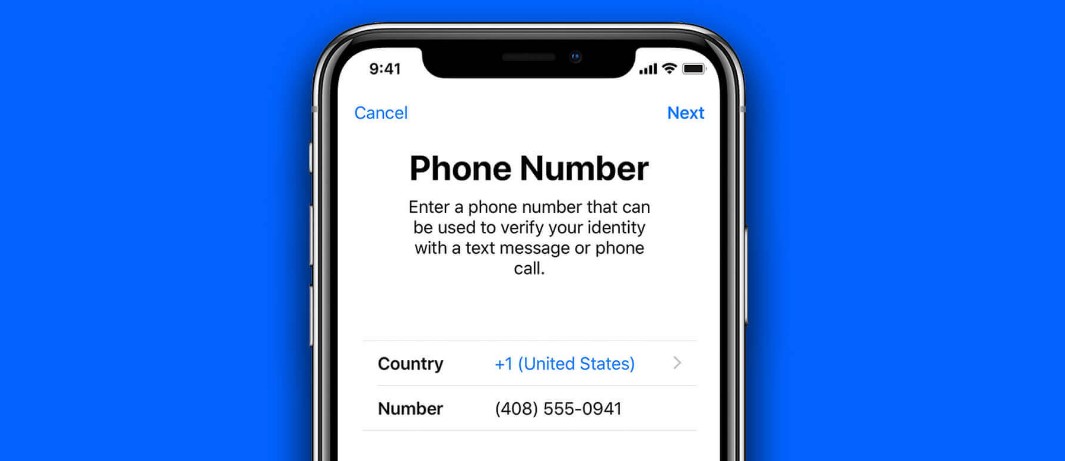How to Cancel Two Factor ID On Iphone? In today’s digital world, security is a top priority. Whether you’re protecting your personal data, financial information, or sensitive work-related documents, ensuring that your accounts remain secure is vital. Two-factor authentication (2FA) is one of the most widely recommended security measures for safeguarding accounts. However, there may be instances where users wish to turn off this feature on their iPhone. While the process is straightforward, it is important to understand the implications and the correct steps to follow.

In this article, we will walk you through the process of disabling two-factor authentication on your iPhone if you have recently enabled it. Additionally, we’ll discuss the potential risks, alternative security measures, and why 2FA remains a crucial feature for protecting your Apple ID.
Understanding Two-Factor Authentication (2FA)
Two-factor authentication adds an extra layer of security to your Apple ID, ensuring that even if someone has your password, they cannot access your account without a second form of verification. This second factor is usually a code sent to your trusted devices or a phone number. The primary goal of 2FA is to protect your Apple ID from unauthorized access, particularly if your password is ever compromised.
Here are some key benefits of 2FA:
- Enhanced Security: It prevents unauthorized access to your Apple ID, even if your password is stolen or guessed.
- Control Over Devices: It allows you to manage and monitor which devices are linked to your Apple ID.
- Peace of Mind: Knowing your account is protected by an additional security layer can reduce the stress of potential breaches.
However, while 2FA is an excellent tool for enhancing security, some users may find it inconvenient or unnecessary for their specific needs.
Why Would Someone Disable 2FA?
There are several reasons why someone might choose to turn off two-factor authentication on their iPhone:
- Convenience: Requiring a second authentication step for every login can feel cumbersome, particularly for users who frequently log in and out of their accounts.
- Device Access Issues: If you no longer have access to your trusted device or phone number, using 2FA can become challenging.
- Temporary Use: Some users enable 2FA temporarily to address immediate security concerns and later decide to disable it once the concern has been resolved.
- Limited Use Cases: For users who primarily use their Apple ID on a single, secure device, the added security may seem excessive.
Regardless of the reason, it’s essential to weigh the pros and cons carefully before deciding to turn off 2FA.
How to Turn Off Two-Factor Authentication on Your iPhone?
If you’ve decided to proceed with disabling 2FA, it’s crucial to note that this is only possible if you enabled the feature less than two weeks ago. Apple provides a limited window for users to turn off 2FA after enabling it. Beyond this period, 2FA cannot be disabled, and you’ll need to continue using it as part of your Apple ID security setup.
Follow these steps to disable two-factor authentication on your iPhone:
1. Go to Settings
- Open the Settings app on your iPhone. This is where you’ll find all the options related to your Apple ID and account security.
2. Tap on Your Name
- At the top of the Settings screen, tap on your Apple ID name. This will open a menu with various Apple ID-related options.
3. Navigate to Password & Security
- In the Apple ID menu, select Password & Security. This section contains all the settings related to your Apple ID’s password, security questions, and authentication methods.
4. Turn Off Two-Factor Authentication
- If the option is available (and you are within the two-week window), you’ll see a button labeled Turn Off Two-Factor Authentication. Tap on it to proceed.
5. Confirm Your Choice
- You may be prompted to verify your identity by entering your Apple ID password or answering security questions. Follow the on-screen instructions to confirm.
6. Review Security Settings
- After disabling 2FA, ensure that your account has alternative security measures in place, such as a strong password or security questions.
Important Notes
- Time Limit: As mentioned earlier, you can only disable 2FA within two weeks of enabling it. After this period, the feature becomes a permanent part of your Apple ID security.
- Security Risks: Turning off 2FA significantly reduces the security of your Apple ID. Without the added layer of protection, your account becomes more vulnerable to hacking attempts.
- Explore Alternatives: If you find 2FA inconvenient, consider using other security measures, such as:
- Two-Step Verification: A less stringent but still effective method of securing your account.
- App-Specific Passwords: Useful for accessing third-party apps without sharing your primary Apple ID credentials.
Why Apple Limits the Ability to Disable 2FA?
Apple’s decision to restrict the ability to disable two-factor authentication aligns with its broader commitment to user security. By making 2FA mandatory after a specific period, Apple ensures that users maintain a baseline level of account protection. While this approach may be frustrating for some users, it’s designed to reduce the overall risk of account breaches and unauthorized access.
Disabling two-factor authentication on your iPhone is a decision that should not be taken lightly. While the process is straightforward, it comes with significant security implications. Before proceeding, consider the potential risks and explore alternative ways to enhance your account security without compromising convenience.
If you decide to keep 2FA enabled, remember that its purpose is to protect your valuable data and personal information. Embracing this added layer of security can go a long way in safeguarding your digital life.
For those who genuinely need to disable 2FA, following the steps outlined above will ensure a smooth and hassle-free process. However, always remain vigilant about your account’s security and adopt best practices to minimize potential vulnerabilities.